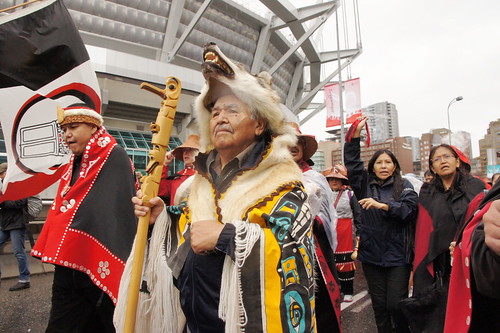As part of the Truth and Reconciliation Week in Vancouver this past September, survivors of the Alberni Indian Residential School were honoured in a ceremony that formally announced the return of an important link to their past: their art.
The former art teacher at the school had kept approximately 80 pieces of artwork created by students over 40 years ago, which were bequeathed to the University of Victoria upon his death. As part of the TRC initiative, the university set out to locate the surviving artists and their families to return the works to their rightful owners.
As Chief Councillor Jeff Cook acknowledges in his speech, the art classroom was, for many children, the only escape from the regimented schedule and demands of life in a residential school. Considering that many children upon first arriving at a residential school could not speak English (or French), art provided them with an opportunity to express themselves non-verbally. From the collection that the university acquired, several recurring themes and images appear, from depictions of their communities, the land and way of life, to expressing emotions surrounding life in the residential school.
The artwork not only provides us with a greater sense of how children perceived their experiences at residential schools, but as Cook points out, is valuable for the survivors to confront as a means of reconciling their pasts.
Watch the entire ceremony here. The presentation by the University of Victoria and Chief Councillor Jeff Cook begins around the 21:45 mark.

